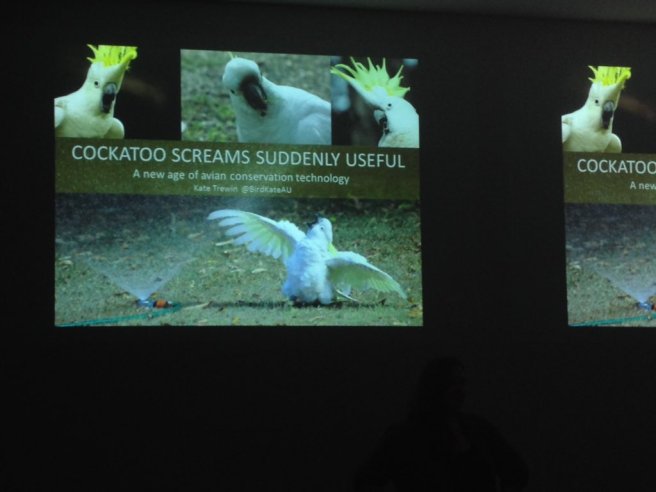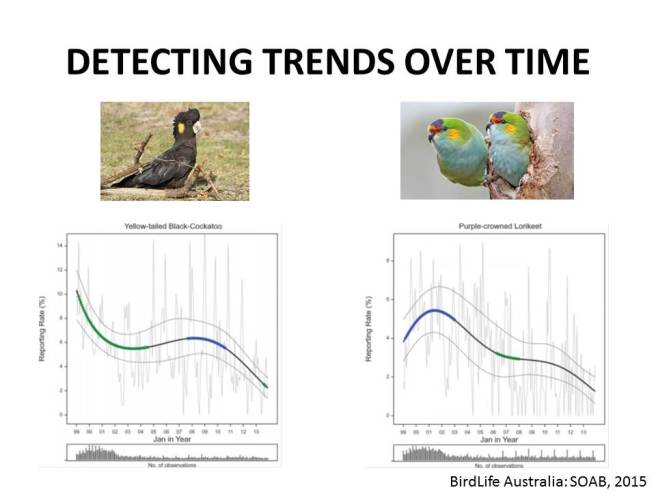So today I was at a biological sciences postgraduate symposium at the University of Melbourne, when reflecting on how I prepare for a presentation I thought I might share some helpful (for me at least) tips about how I do it.
First I would like to preface this with; I understand not everyone can work in the way I do, but doing these things (or rather, not doing things) has really helped me let go of a lot of public speaking anxiety and get really comfortable in front of an audience.

1 – Submit the wrong title for your presentation by accident.
Now this may not seem like a helpful hint, but really I’ve learnt a lot about presenting through the mistakes I’ve made, and while a sensible title is always good, often a funny title will lighten the mood and encourage people to listen to you a little more, if nothing else, it will start your presentation off with some smiles. Don’t forget though that you need to know your audience, a silly title might be totally acceptable, if not encouraged, in a ‘3-minute-thesis’ type meet, but not as easily received at a more prestigious academic conference.
2 – Totally forget that you signed up to present
Forgetting this sort of thing may also seem counterproductive to presenting well, but if you don’t spend a month in the lead up to the presentation stressing about something or worrying about every little detail you will often find your presentation will have a more natural feel to it and be easier to listen to for the audience.
3 – Don’t make your slides until a few days before your talk (and other slide pointers)
So this is going to be a fairly long point, because most of my pet peeve in presentations come from slides. Practice and time will get the other 4 points to you, but slides, man there is no excuse not to nail these from early on.
DO include a title slide, pictures, acknowledgements, and shorthand references on the relevant slide.
DO NOT include an essay on slides, picture references on each slide, a reference slide, a tacky ‘the end’ slide.
When you present to an audience you want them to listen to you, most people will spend their time looking at your slides, but they should be listening to you while they do so, your slides are meant to compliment what you’re saying not re-iterate it. Large, relevant pictures from ‘creative commons’ sources (Flickr is an excellent source for this) are great, alongside short dot points which highlight the key points you’re making. Long references for each point you’re making or picture you’re using will clutter up your slide and no one is going to follow them, when I am talking about something I’ve read in a journal I include “Authors et al (2016)” in the bottom corner of the slide and people can jot that down nice and quickly if they want to go back and read further on those points. At the end of your presentation include a nice slide with your acknowledgements (for me that’s supervisors, lab mates, funding sources, affiliations), and leave it there, do not use a reference slide.
Make sure the colours on your slide contrast well, for example don’t use anything that colour blind people might not be able to see, or any colours that are too similar, although they might look great on your computer screen they probably won’t project in a clear or coherent way and all your hard word will have been pointless. And last but not least, you should average on one slide per minute for your presentation, for me if I have a 3-minute length presentation I only have one slide, but the general rule of thumb is one slide a minute which means you aren’t flipping through slides too quickly and goes hand in hand with trying to get people to listen to you instead of ignoring you and reading your slides.

4 – Forget to write your talk until the day of the presentation, or maybe don’t write one at all
These days I don’t even write a talk out for presentations, I just have a series of dot points that I want to remember in a roughly cohesive order. Another good thing to ad here is DO NOT USE NOTES! Put down the cue cards, don’t take that iPad up with you, don’t read off the slides, just have your dot points written out and memorised and speak from there. This leads into my next point…
5 – Don’t run through your presentation (much)
It’s ok to practice your presentation once or twice in front of lab mates, family, or friends. But for the love of good talking do not run through your talk until you know every word by heart. Why you ask? Well that’s because if you rehearse too much your presentation will have an over rehearsed feel to it, and whether you realise it or not you will start to sound bored with what you’re saying, and let me tell you, the audience will definitely notice. As mentioned before, just have a rough idea of what order you need to say things in and let the words come.
Public speaking is a huge fear for a lot of people, and I don’t claim to be an expert on what makes a talk better or worse, I can only speak here from my own experiences of learning how to present. But I do know that the more you do it the better you’ll get, and the more talks you do the more natural your manner in front of an audience will become and the more people will really want to listen to you.

